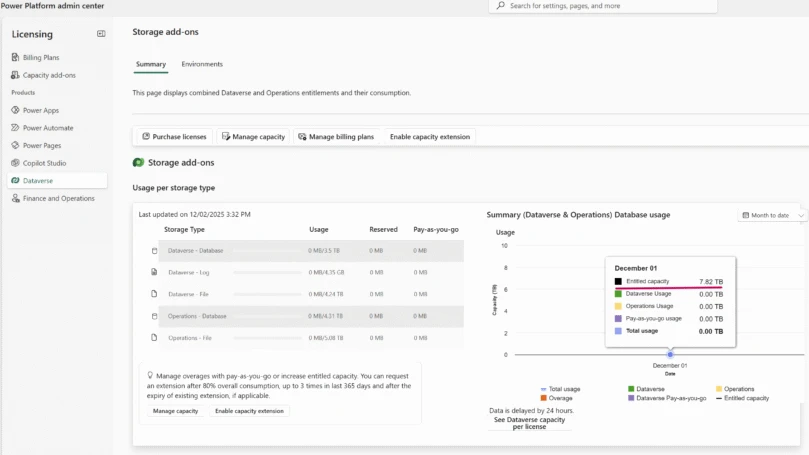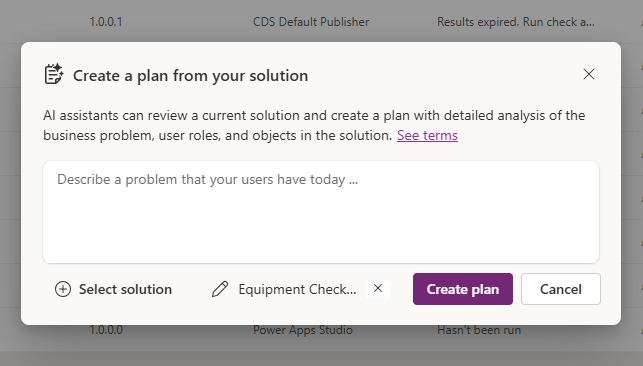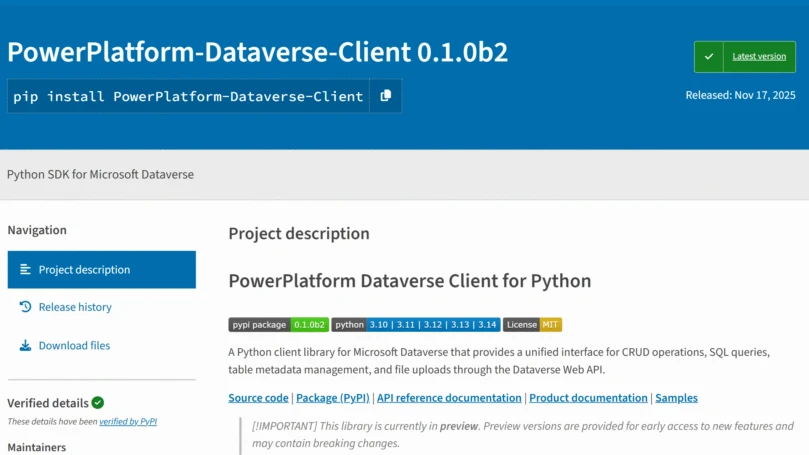Microsoft Power Apps is now used by more than 25 million users every month,1 with an increasing number of those apps delivered by dedicated teams of professionals. We’re investing in the end-to-end experience of these developer teams, bringing together Microsoft Copilot and human collaborators to be able to deliver impactful and scalable apps faster than ever.
Here are some of our key announcements for Microsoft Build 2024:
- Use Copilot to create and understand Microsoft Power Fx as well as rich data models. Copilot is going beyond the basics to explain code intricacies, auto-generate comments, and generate Power Fx code from natural language instructions, right in the formula bar in a “type ahead” style similar to GitHub Copilot. Makers can now work with complex data models created by natural language, Excel, or SharePoint in a visual and interactive workspace. This update allows developers to use Copilot to build multiscreen responsive applications over more complex data schemas, simplifying the daily work developers do when building and maintaining apps.
- Deliver more powerful Copilot-infused apps for users, including forms that automatically fill themselves out so that users don’t have to type repetitive content, and mobile apps that can now turn voice input into Copilot-powered answers, saving workers from tedious typing and navigation on mobile devices.
- Collaborate in real-time with live coauthoring. Power Apps now enables real-time coauthoring in Power Apps Canvas Studio so that multiple makers and developers can build simultaneously. This is a long-awaited boost for Power Apps development teams and brings a level of efficiency not possible with traditional code-first development.
- Understand the code behind your app. Developers can now open a code view directly in Microsoft Power Apps Studio, creating more transparency and easier collaboration. Code view will enable developers to see a section of their app in YAML format, as well as copy and paste code to and from Power Apps Studio. This will enable developers to transport their code between apps, make app edits directly in code editors, and enable the entire community to share and reuse code more easily.
- Use first-class DevOps. Developers can now natively sync solutions to source control so that they have transparency around changes and can integrate appropriate development processes, just like with any other software project. Developers will be able to easily build and release without leaving the Power Apps portal, potentially saving hours of time.
Below, we will explore each of the categories in more detail.
Use Copilot to create and understand Power Fx as well as rich data models
Some developers want to use low-code to automate the mundane aspects of building an app. Others inherit low-code apps from colleagues and need to quickly get up to speed. Regardless of the circumstance, Copilot in Microsoft Power Apps is now your intelligent companion that explains any formula you select, right in the formula bar.
Coders can copy and insert the explanation as a code comment or share it with others who are working on the same app.
Developers can also write comments in natural language and have Copilot suggest a formula in Power Fx directly in the typing loop, in a similar fashion to GitHub Copilot. Copilot in Power Apps uses common comment patterns such as // and /* */ that developers are already familiar with to minimize friction and increase efficiency. Comments can remain in the formula bar as documentation, just like with traditional code. This means that coders can use existing knowledge to quickly get up to speed, minimize errors, and build—fast.
“[Using Copilot for formula configuration] has already created knowledge growth for the developers because we can see a function in action and use that knowledge in other apps for resolving problems, creating enhancements or even in the initial build process.”
Tami Wattenberg, Lead Analyst, Lumen Technologies
When working with data today, Copilot helps makers quickly build a table or import an Excel spreadsheet into a new table to support data-rich apps. This was the first step in Copilot working closely with makers to accomplish complex and time-consuming data modelling.
Now, makers can collaborate with Copilot to build out data models over multiple tables at the same time, and work on the relationships between them. Makers can import Excel sheets as well as SharePoint lists or use Copilot-generated sample data to build out more complex data models. Use Copilot and a visualization of the data structure to be confident in the data store your apps can consume.
Copilot saves makers time. Makers using Copilot in Power Apps used 88% fewer clicks and were 60% faster when building apps than those who didn’t.2
“Building a prototype from scratch would have taken six-eight hours. We were able to just describe in natural language and build in a few minutes.”
Ron Colvin, Director, CONA Services
Deliver more powerful Copilot-infused apps for users
App makers can also integrate Copilot in Power Apps into mobile apps to make the lives of end-users easier. We recently announced that end-users can use Copilot to assist with form filling in model-driven apps. Now, makers will be able to use Copilot for canvas apps, powered by Microsoft Copilot Studio, to create a tailored experience for end-users. End-users, like frontline workers, can then use generative AI and voice dictation on mobile devices to ask questions and complete tasks, including collecting or submitting information on the go.
For example, an inventory manager on the shop floor can ask Copilot questions about the inventory of the item or to update inventory, as they walk from aisle to aisle. Developers can infuse intelligence from Copilot in Power Apps with other mobile capabilities like barcode scanning, NFC reading, and location services to create modern, high-impact apps.
Collaborate in real-time with live coauthoring
Coauthoring has arrived for Power Apps Canvas Studio. Now, up to 10 developers can work together simultaneously in a tight inner loop, with the ability to see their own and their team’s changes instantly compiled into a running app. This is dramatically faster than traditional development cycles of merging and compiling local changes.
This is also a major improvement for current Power Apps development teams, removing the need to divide efforts or consolidate changes from multiple app instances. Developers will now be able to see real-time presence and changes of the whole development team in the Power Apps Studio.
“Coauthoring in canvas apps has the potential to accelerate Power Apps Development at Zurich Insurance Group, especially for complex solutions.”
Lukas Kormuth, Microsoft Power Platform Solution Architect, Zurich Insurance
To learn more about how Zurich Insurance Group uses Microsoft Power Platform, watch this video.
Understand the code behind your app
Fusion development is getting easier. Now, developers can view and use source code in a readable YAML + Power Fx format. Code view in Power Apps Studio allows a greater level of transparency for developers as they work with canvas apps as well as the ability to copy and paste code between your preferred code editor—enabling small changes in code, reuse across your apps, and sharing code with other developers and the community.
Use first-class DevOps
As solutions scale to larger development teams, multiple environments, and different types of components, developers can now have full source control, just like any other coding project. Canvas apps are automatically synchronized to the repository and branch in the new YAML + Power Fx format.
But it’s not just canvas apps. Now, all solutions developed in Microsoft Power Platform will be able to natively sync to and from source control, as developers can commit and pull changes in a few seconds. Previously, makers had to leave the Power Apps portal and use additional tools to synchronize with source control. Now, integration with your Azure DevOps Git repository will make it easy to track changes and identify and resolve conflicts, thereby creating a smoother experience. Citizen developers can seamlessly build alongside professional developers, using the same processes and workflows, all in one place.
Gone are the days of manual deployments and switching applications. With point-and-click functionality, you can trigger deployments effortlessly, saving hours of time.
Of course, source control also includes amplification lifecycle management (ALM) processes that cannot be bypassed in addition to appropriate reviews before going into production. This helps mitigate some of the risk associated with working in a development environment.
Work securely
As low-code and AI accelerate digital transformations, organizations need effective tools for assessing and managing security and compliance, while enabling citizen developers to build safe solutions that result in business productivity and growth. The security hub preview helps administrators quickly assess security posture, identify and act on prioritized recommendations, use high value tools to detect threats quickly and effectively, and proactively set policies in place to safeguard from vulnerabilities and risks. To shift left security responsibilities and embrace a shared responsibility model, security hub extends to maker experiences with product-specific recommendations, such as the Microsoft Power Pages security workspace, providing the visibility and tooling required for makers to assess the security and compliance of their solutions.
Manage Copilot
With the expansion of Copilot capabilities across Microsoft Power Platform, admins need a way to manage all their generative AI features and facilitate rollout across their organizations. The Copilot hub preview provides a location for documents, insights, and governance for Microsoft Copilot in Power Platform. With simple access to Copilot resources, admins can learn, prepare, configure, deploy, and measure usage of generative AI features across their organizations.

Get started
Join us at Microsoft Build and experience the ease that Power Apps brings to the world of professional development. Embrace the era of AI-assisted development and discover how these new features can amplify your impact as a developer. You can:
- Learn more about the latest next-generation AI updates to Copilot.
- Try out Power Apps with the Developer Plan.
1 Microsoft Fiscal Year 2024 First Quarter Earnings conference call
2 Based on Microsoft internal research
Most features are currently available in the United States and English language for preview. Copilot for explaining formulas and mobile capabilities like barcode scanning, NFC reading, and location services are generally available. Using Copilot to create tailored experiences in canvas apps through Copilot Studio, voice dictation, the native Git integration, and Copilot hub are targeting public preview in Summer 2024. Note that these preview features are experimental, and accuracy and relevance cannot be guaranteed.




